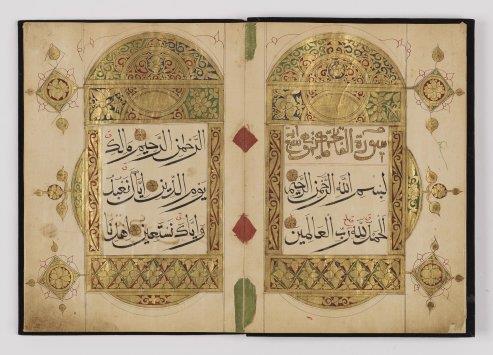
Qatar- Historical Quranic manuscripts at the Heritage Library cast light on Islamic traditions in often-overlooked regions
Islam, with its nearly two billion followers, is unquestionably a global religion. But as Islam has grown over the centuries, the regions to which it has spread have contributed their own cultural elements to the overall Islamic tradition.
Qatar National Library's China and Southeast Asia Manuscripts Collection is an excellent example of this contribution. With around 700 volumes, mostly Quranic manuscripts, the collection is one of the largest of its kind in the region. The earliest manuscripts date to the 16th century, with most produced in the 19th and 20th centuries.
The manuscripts are, of course, cultural and artistic treasures in their own right. For researchers and historians, though, they offer valuable insights into the ways Islamic styles of calligraphy, illumination and binding were combined with local styles, symbols and aesthetics across Asia. The influence of local style and culture is predominantly evident in those Quranic manuscripts produced in China, particularly in their adaptation of elements of Chinese art.
Having so many manuscripts in one place enables researchers to develop new avenues of study of Islamic traditions in these regions and contribute to a greater understanding of Islam's influence around the world.
Wassilena Sekulova, the Library's Head of Manuscripts and Archives, said: 'Other areas and time periods, such as the Mamluk and Ottoman periods, have been extensively studied, while very little research has been done on, for example, Chinese Islamic manuscripts. The China and Southeast Asia Manuscripts Collection, then, is a rare resource for understanding the often overlooked interplay between Islam and these regions.
Among the manuscripts available in the collection are Anwar al-Tanzil wa-Asrar al-Ta'wil (The Lights of Revelation and the Secrets of Interpretation) by al-Baydawi (died in 685 AH), and a Qur'anic manuscript in two volumes with the Name of Fatima Khatun, from the 19th Century China.
Most of the manuscripts are in Arabic, but some are in Jawi, an Arabic script adapted for writing certain Southeast Asian languages.
The valuable collection was recently expanded as new items were added, which forms part of the Library's mission to preserve and make accessible items of historical and cultural importance to Qatar, the region and the Muslim world.
In an effort to further enrich the collection, the Heritage Library is working on adding new material to fill gaps in the collection and provide opportunities for further scholarship. To that end, experts from a number of countries will participate in a comprehensive research programme to be launched later this year at the Library to further study the collection and generate original research, enhancing the understanding of Muslim traditions and building bridges between the spheres of Islamic influence.
'By studying the history of interactions between Islam and its followers throughout Asia, we gain a better understanding of the religion's global impact, and the manuscripts in the Library's collection offer an important window into this world, said Sekulova.

Legal Disclaimer:
MENAFN provides the
information “as is” without warranty of any kind. We do not accept
any responsibility or liability for the accuracy, content, images,
videos, licenses, completeness, legality, or reliability of the information
contained in this article. If you have any complaints or copyright
issues related to this article, kindly contact the provider above.


















Comments
No comment